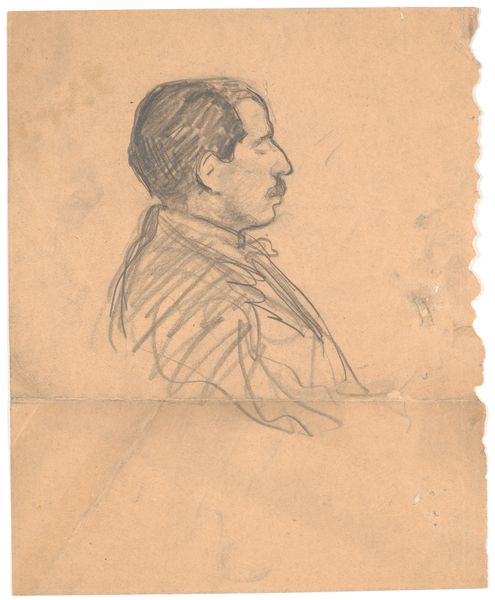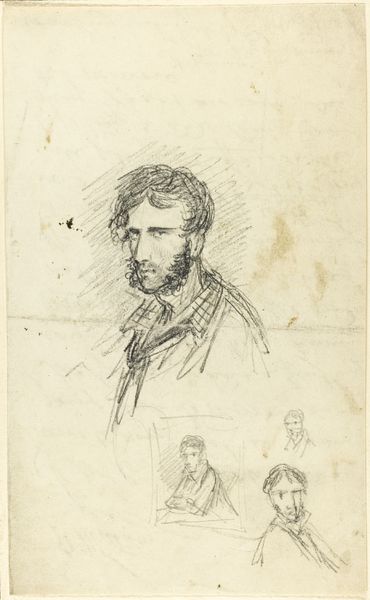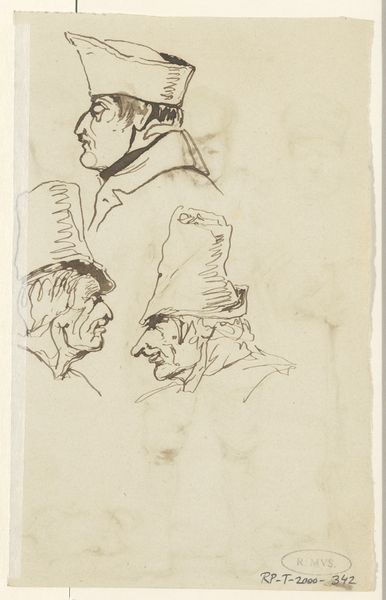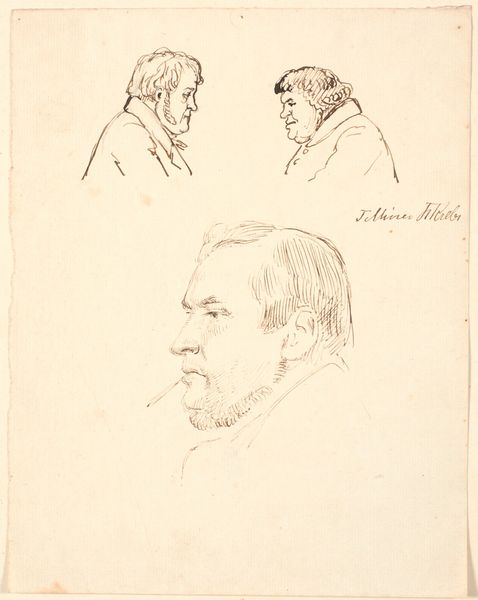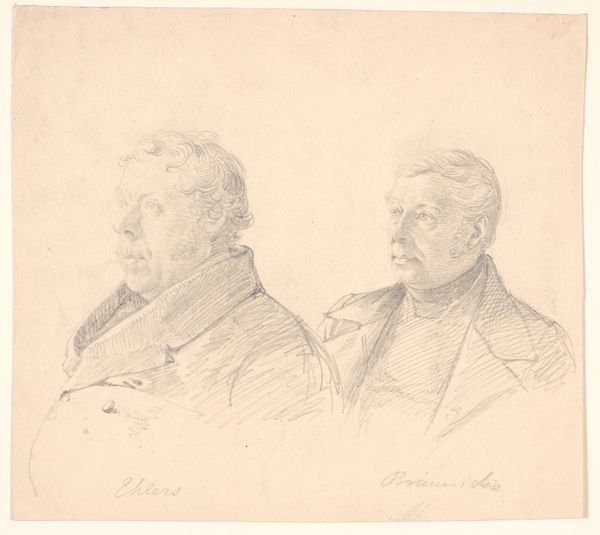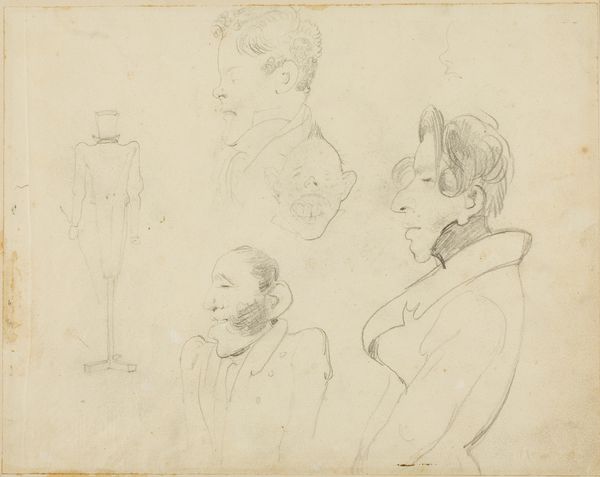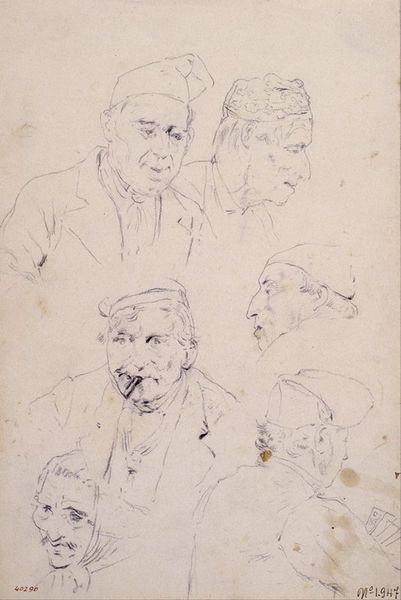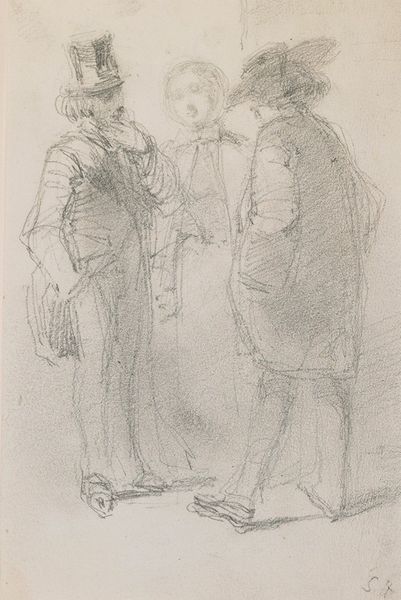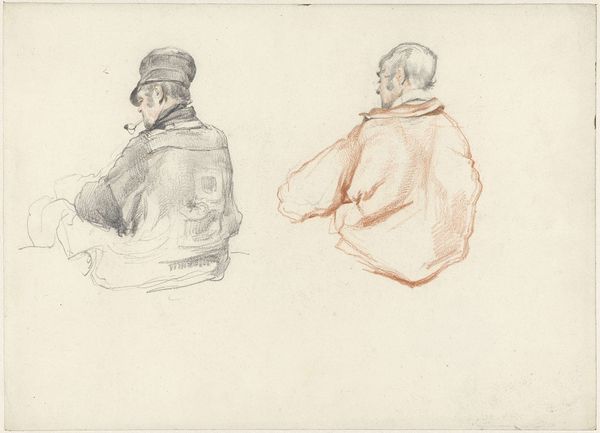
Bierbrauer Körber aus der großen Friedberger Gasse, Halbfigur und Brustbild
0:00
0:00
drawing, paper, pencil
#
portrait
#
drawing
#
figuration
#
paper
#
romanticism
#
pencil
#
portrait drawing
Copyright: Public Domain
Editor: So here we have "Bierbrauer K\u00f6rber aus der gro\u00dfen Friedberger Gasse, Halbfigur und Brustbild," a pencil drawing on paper by Carl Hoff. There's a quiet, contemplative feeling to it. What strikes you most about this piece? Curator: Well, immediately I’m drawn to think about who K\u00f6rber was, beyond his profession as a beer brewer. These aren’t just portraits; they’re representations of a working-class individual. How does Hoff, presumably part of a different social stratum, portray this man? Editor: That's a great question. They're rendered so simply; what could that signify? Curator: Exactly. Does the lack of embellishment convey respect, or perhaps something else? Considering the time period—potentially early to mid-19th century—and the social hierarchies present, it is important to consider if this imagery plays into the common trope of the working man during that era. Does the Romanticism style aestheticize the subject and thereby, even unintentionally, reinforce a social distance? Editor: I see what you mean. We tend to romanticize simpler times. Curator: Right. So, with these portraits, how do they speak to ideas of class and identity? Consider also how artistic representations impact our view and relationship to contemporary class struggles. The garment, too, could perhaps represent status. What does it imply, the way it is portrayed? Editor: It’s really interesting to think about art this way. I normally just focus on technique. Curator: The technique informs so much, and your initial reading is absolutely valid. But, looking at it through a socio-historical lens can reveal so much about power dynamics represented even in simple portraits such as this one. The images in our museums always ask the question: Who is deemed worthy of artistic recognition, and to what degree? Editor: I learned so much! This expanded context provides the ability to not only consider technique and style but societal impact. Curator: Agreed! Hopefully, by engaging with the socio-historical context, you may uncover new layers in the art you appreciate.
Comments
No comments
Be the first to comment and join the conversation on the ultimate creative platform.

